What is denim and how is the fabric used?
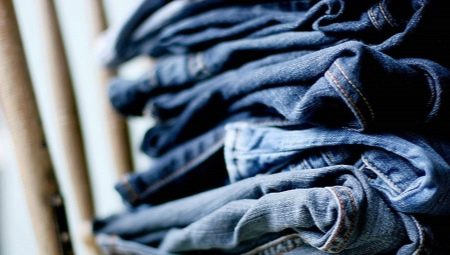
Almost every modern person has at least one denim item in their wardrobe. Such products not only look stylish, but also wear for a very long time, so they are happy to buy not only for adults, but also for children.
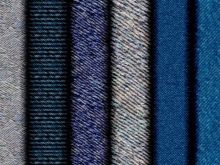

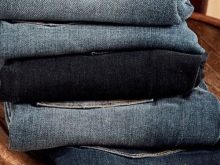
What is it and how is it different from denim?
Denim is a dense twill weave fabric. Initially, the material was made from natural cotton. Now the fabric also includes synthetic fibers. This makes the material more flexible and practical.
In order for the product to be of high quality and retain brightness for a long time, the fabric is processed several times in baths with dye. Traditionally, the material is painted in different shades of blue. Less common is black fabric. Sulfur-based dyes are used to color it.
After dyeing, the web is passed through hot rubber rollers. This helps to increase the density of the fabric. The material treated in this way does not shrink after washing.
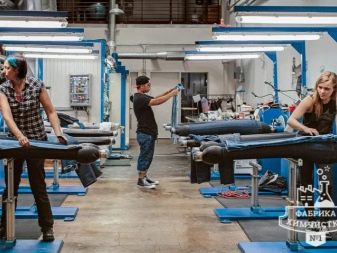
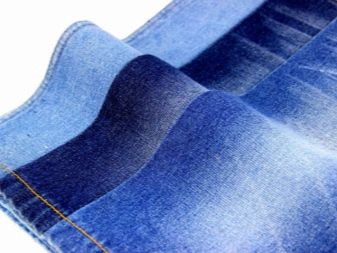
Besides being strong and color-fast, denim has other benefits.
- Versatility. Products made from this material can be worn both in cold and hot weather. Stylish jeans or jackets can be chosen for people with any type of figure. They are able to fit into both classic and modern styles.
- Durability. A quality denim item can be worn for 5-10 years without losing its visual appeal.
- Air permeability. Despite its density, the material is highly breathable. In addition, he shows himself perfectly in bad weather. The material quickly absorbs excess moisture.
- Practicality. It is very easy to care for denim garments.They do not get dirty for a long time, which means they do not need to be washed too often.

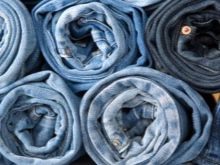
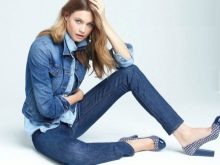
Denim has no significant drawbacks. But products from some manufacturers, when wet, may shed, staining skin or clothing. In addition, quality material is quite expensive.
It is worth noting that many buyers confuse denim and denim. The difference between these materials is that denim is thicker. Denim is a lighter version of this fabric.
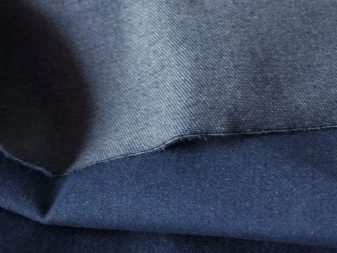
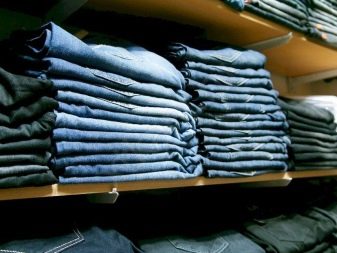
History
Denim was first made in France. The material was called "twill from Nimes" after the city from which it was brought. Over time, this name has been shortened. In the first years of its existence, the material was used exclusively as sailing fabric, as well as for sewing protective covers for ship cargo.
But already at the beginning of the 19th century, American clothing manufacturer Levi Strauss drew attention to this durable material. He needed fabric for sewing work clothes. Denim was perfect for this purpose.
Clothes made of durable and wear-resistant fabric began to be worn by laborers. It was comfortable, durable and perfectly protected the skin from damage. Denim products were worn for a long time and dried very quickly.
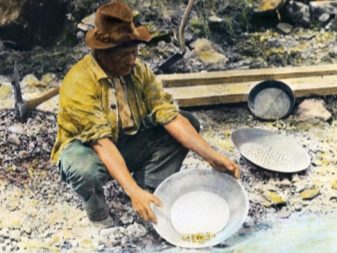

Over time, these things have attracted the attention of a wider range of people. Practical canvas pants with laconic copper fittings quickly gained popularity among young people. This wardrobe item has become one of the most sought-after items in America.
Then they began to use denim for sewing jackets, overalls and dresses. All these products very quickly entered the wardrobe of Americans and residents of other countries.
Denim is also very popular nowadays. They are easy to care for and beautiful. Therefore, they are worn with pleasure by both young people and adults.



Description of species
Over the past few decades, the technology of processing and sewing fabric has changed several times. This allowed manufacturers to look at this material in a new way. Now there are several types of denim, differing in both their appearance and quality.
- Classic denim. This material is very dense. It is rough and has excellent strength and resistance to all kinds of mechanical damage. The material can be either dark blue or light. It is usually used for sewing classic jeans.
The lining of classic denim garments is always colorless.

- Shaumbra. This is the lightest type of denim. Such fabric is produced from threads of different shades of blue and purple. The material is very pleasant to the touch. Therefore, it is often used for sewing dresses, shirts and sundresses. They come out nice and comfortable to wear. Such fabric does not wrinkle and is perfectly washable.
The downside of this material is that it fades quickly. New items also tend to shrink when washed. This must be taken into account when buying.

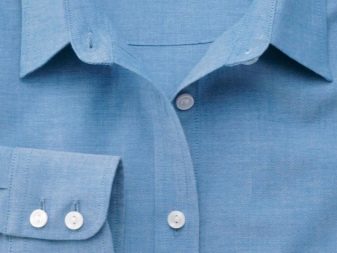
- Stretch. This type of fabric has the best stretch properties. This is due to the fact that it contains elastane fibers. Stretch clothes fit perfectly on the figure. At the same time, the fabric does not stretch over time and does not lose its shape. From this type of denim, most often they sew women's clothing, as well as things in a sports style.
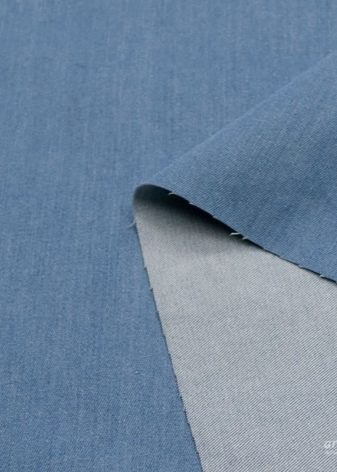
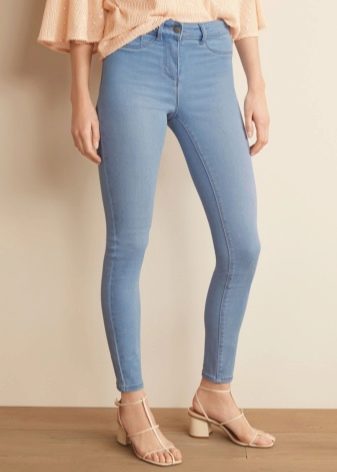
- Ecru. This material is usually beige or slightly yellowish. It is not stained.
Its main advantage is environmental friendliness. Unfortunately, the material gets dirty easily. Therefore, it is rarely used for making everyday things.
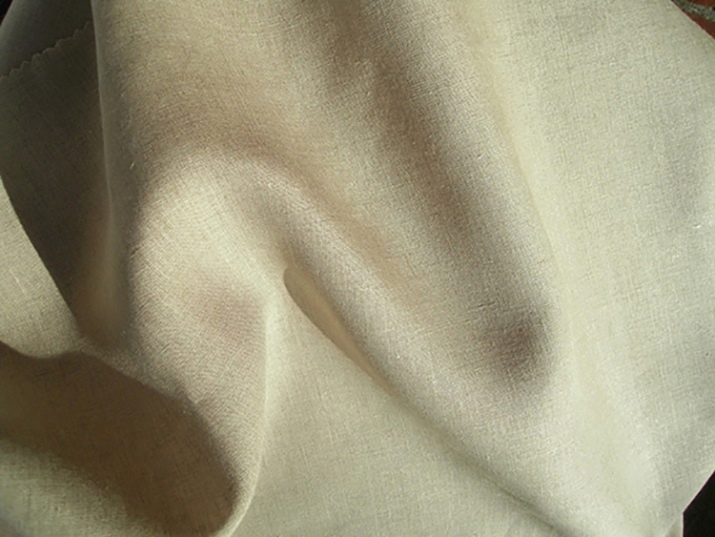
- Gin. It is a modern cotton fabric with a diagonal weave. The material is of low cost. However, it is not strong enough.
Things made from such material do not last too long. In addition, they need more thorough care.
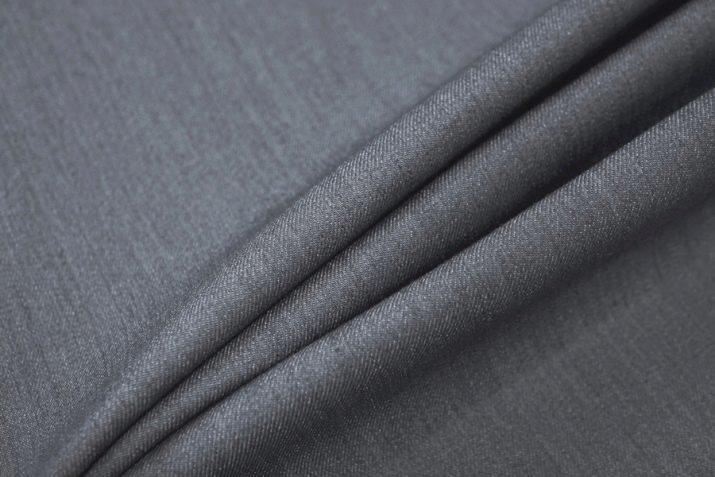
- Broken twill. This type of fabric was first produced by the manufacturers of the Wrangler company. The material is still the hallmark of this company. The fabric has an unusual pattern.Very often, threads of different shades are used for its production. This fabric is rather rough to the touch. Therefore, it is most often used for sewing trousers and jackets. In addition, quality accessories are obtained from it.
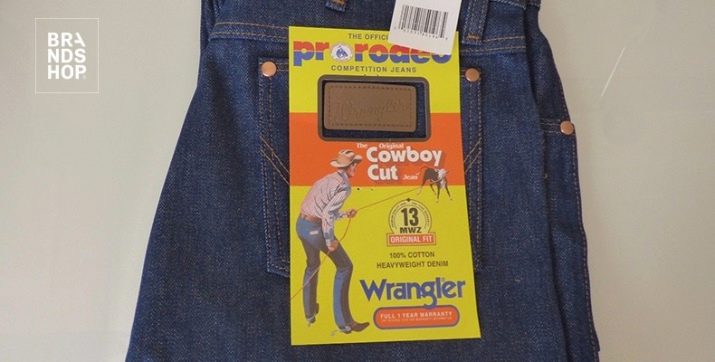
- Vintage. This material is also called dumplings. Plain fabric differs in that there are abrasions in certain places on its surface. The material was especially popular in the 80s and 90s. Now stylish jeans and jackets are also sewn from it. They are especially popular with lovers of retro style.
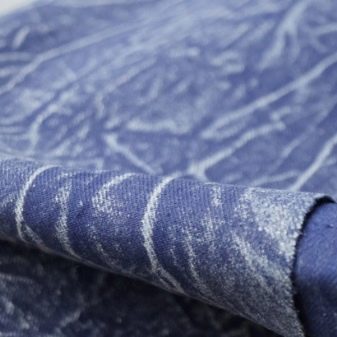

- Warm denim. This type of material is a combination of denim with fleece or a bike. Excellent warm clothes are sewn from it. They can be worn both in autumn and winter.


All these materials are good in their own way. They have no significant disadvantages.
Selection Tips
When choosing denim products, make sure that this is a real classic fabric, and not a cheap fake. They do it as follows.
- To begin with, things need to be examined both from the front and from the seamy side. The interior of the product usually remains unpainted or has a lighter color.
- Next, you need to make sure that there are characteristic diagonal scars on the surface of the denim. The fabric must be gently crumpled. Quality denim takes shape immediately.
- You can also determine a good fabric by its weight. Quality denim is usually quite heavy.
- If possible, a small piece of cloth should be set on fire. Burning denim gives off a papery smell.
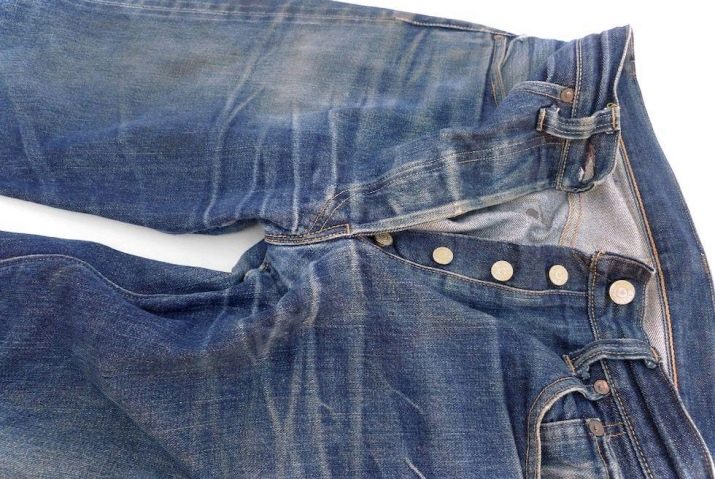
When choosing denim clothes, the following points should be considered.
- Landing features. Clothes should fit well. Products should not hinder movement. When buying clothes from stretch, you should pay attention to the fact that they stretch well. Quality things made of this fabric stretch not only legs or sleeves, but also pockets.
- The color of things. Denim color also plays an important role. It is better to choose things in a neutral color as a base for your wardrobe. They will go well with products of any shade. For everyday wear, it is recommended to choose shades that are not too easily soiled. Lovers of original outfits should pay attention to products with prints or inscriptions.
- Quality. When buying things, it is important to pay attention to the quality of the seams. They should be flat. For denim, strong and thick threads are usually used. Otherwise, things will not last so long. The quality of the fittings also plays an important role. It's also worth checking out when purchasing. All zippers and buttons should be easy to open. It is also important that they are very well secured. There can also not be any sloppy protruding threads on the clothes.
- Accuracy. The appearance of denim products should be presentable. It is important that things are painted evenly. There can be no stains or burn marks on them.
- Manufacturer. An important role in choosing a quality item is played by who is its manufacturer. The best denim products are produced in Japan and America. They are of the highest quality and most durable. Good contemporary pieces can be found in the assortment of companies from Italy and Portugal.
When choosing a denim product, you should pay attention to its price. Natural denim cannot be too cheap. It is unprofitable to buy low-quality fakes, because they do not have the strength and durability of denim.
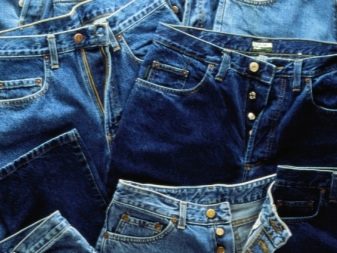

Areas of use
In the modern world, denim is used in the following areas.
- Clothing. Most often, jeans or shorts are sewn from this material. Various denim dresses are also in demand among buyers. The choice of all kinds of models from this material is very large. For colder weather, you can choose stylish denim jackets.
- Accessories. You can complement your image with stylish accessories from the same fabric. These can be baseball caps, backpacks and bags. They fit perfectly into everyday style and are worn for a very long time.
- Shoes. Light stylish sneakers are often sewn from thick denim.They can be monochromatic or decorated with various stripes or prints.
- Decor. Due to its durability, denim is often used in the arrangement of houses and apartments. It is used for upholstering furniture, sewing covers or curtains. All of these items are durable and require minimal maintenance. This is why most buyers love them.
All products made from this material are perfectly combined with products from both natural and synthetic fabrics.

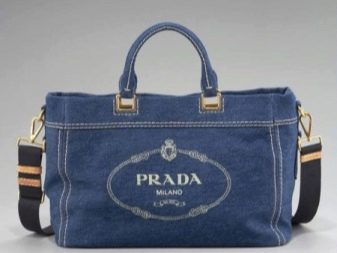
Care rules
When denim products first began to gain popularity, they were washed with regular laundry soap and cold water. Modern things made of this material are looked after in the following way.
- New jeans that may fade are recommended to be washed separately from other items. It is worth choosing a gentle mode for washing.
- Before washing, things must be turned inside out. It is also important to make sure that all zippers and buttons are fastened.
- Powders that do not contain bleaching and aggressive substances are worth using for washing. In this case, denim items will stay bright and beautiful longer.
- If the garments have been washed by hand, they must be rinsed in cool water after washing.
- You don't need to dry things for too long. Overdried items become tough. This is best done outdoors or in a well-ventilated area. It is not recommended to place jeans next to heaters.
- There is no need to iron clean clothes. They practically do not wrinkle and always look good. But, if you want to make things softer, you can iron them, turning them inside out. Dry products must not be ironed. Before ironing, they are sprayed with a spray bottle.
- Denim does not get dirty too quickly. Therefore, it is not recommended to wash them often.
- You can store such things both on hangers and folded. There is no need to create any special storage conditions for them.
- Denim shoes are usually cleaned with a dry brush. Furniture covered with denim should be vacuumed regularly. If something is accidentally spilled on it, the liquid must be wiped off immediately with a towel or damp cloth. Stains from the surface of the fabric can be removed with ordinary soapy water.
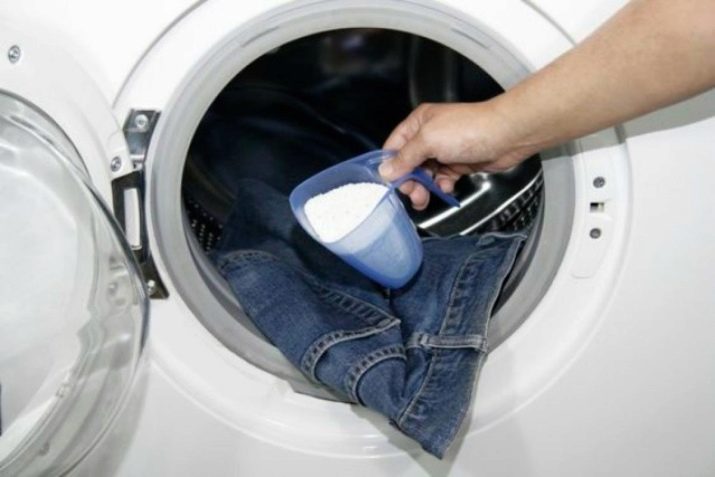
If you adhere to these simple rules, modern denim items will serve their owners for a very long time.








